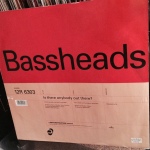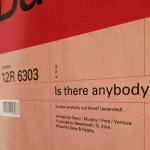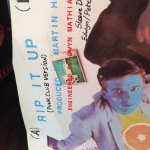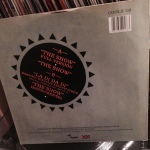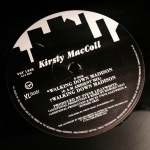Just days before a tour of Europe and the UK, and unable to reconcile themselves with Phil Oakey’s views on the future direction of the band, songwriters and keyboard players Martin Ware and Ian Craig Marsh left to launch their own project, Heaven 17.
Amidst the turmoil, Oakey fought for The Human League name, and to win it, conceded to pay 1% of any future royalties earned by his reformed and restyled band to Ware and Marsh.
He also inherited all the band’s debts, and an obligation to fulfil the upcoming tour, which with only days remaining presented significant issues in itself, given he’d lost the band’s most skilled musicians.
Oakey quickly recruited Ian Burden of Sheffield synth band Graph, and perhaps more famously, spotted teenagers Susan Ann Sulley and Joanne Catherall dancing in a club in the same city, and invited them to join the tour too as dancers and backing singers. Philip Adrian Wright remained as Director of Visuals with the band to complete the line up.
With their overhaul underway, the Human League were able to embark on their planned tour dates, and whilst on the road, Oakey began writing new material for the more-pop less-Avant Garde style Oakey with new-recruit Burden.
The first fruits of the new songwriting partnership emerged in April 1981 when The Human League released ‘The Sound Of The Crowd’. This was also their first single with female backing vocals, and their first with new producer Martin Rushent, who record-label Virgin had recommended to polish the new band’s sound.
The single became the band’s biggest hit to date, reaching number 12 in the UK chart. But the label still viewed the Human League as high risk, as they had little new material, and the majority of the band were not even musicians.
Heavily in debt, the band were given the opportunity of one further single to prove themselves, and on that basis, they chose to record another new Oakey & Burden composition, ‘Love Action (I Believe In Love)’.
The track proved to be the catalyst for the band’s future success, peaking at number 3 in the UK chart, and as a result, persuading Virgin to sanction the release of a full album of new material from the new line up.
That album would become Dare, which would spawn two further top 10 hits in ‘Open Your Heart’ and ‘Don’t You Want Me?’, and which would go on to sell over a million copies.
Oakey’s vision for the band was having exactly the effect he had intended, and with each new release, the full extent of his blueprint became clearer.
For a while the band badged their singles with ‘Red’ or ‘Blue’ code words for fans – the former signifying a dance record, and the latter a pop record (this particular release fell into the ‘Red’ category).
Most single releases were coupled with 12” extended versions and remixes, but this 12” segues the single with its b-side ‘Hard Times’ to create a 10-minute plus piece from the two tracks.
‘Hard Times’ is a largely instrumental track built from a couple of samples from its a-side, and received club play in its own right upon its release, thanks largely to its bold, crunchy bassline.
Producer Martin Rushent was responsible for the band’s extended versions, and before long he would take them in an even more unique direction with the creation of semi-instrumental ‘dub’ versions of their tracks.
These were released in 1982 as a follow up companion album to Dare called Love And Dancing, which was a non-stop remix album, credited to the League Unlimited Orchestra.
12 years after its original release, ‘Love Action (I Believe In Love)’ was heavily sampled by another northern electronic act, Utah Saints, for their top 10 hit ‘Believe In Me’.
Oakey’s vision may have taken the band away from its avant-garde roots to a more commercial pop sound, but the band continued to innovate not just through their music, but also through their identity.
This 12” is significant not just because it earned The Human League the opportunity to record several more hugely successful singles, and a truly classic album.
But also because it pulled together many aspects of the vision Phil Oakey had when he reformed the band in 1980 for the first time – a vision which he was right to pursue with such vigour and determination.
Label: Virgin
Cat No: VS435-12
Year: 1981




